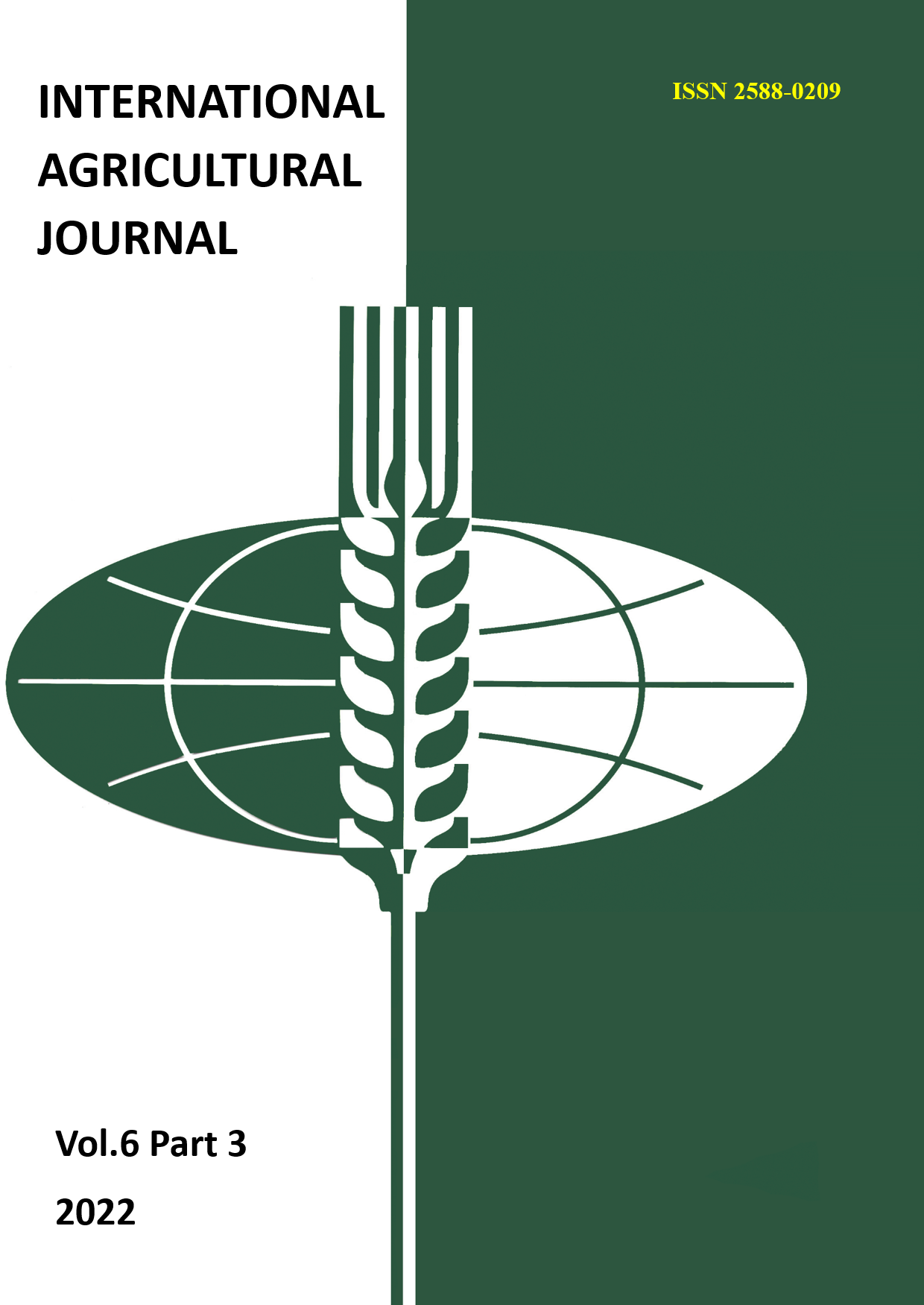COMPARATIVE ASSESSMENT OF DROUGHT RESISTANCE OF DIFFERENT PEAR VARIETIES FOR GROWING IN THE PRE-MOUNTAIN ZONE OF KABARDINO-BALKARIA
Main Article Content
Abstract
An important biological property of the variety is drought resistance, which determines the possibility of its cultivation, especially in areas with dry summers. In many varieties of pear, during drought, the yield decreases, the shedding of fruits increases, and the commercial and taste qualities of the fruits deteriorate. Varieties that adapt to the negative phenomenon and normal growth can be considered the most drought tolerant. The basis for obtaining drought-resistant and productive pear varieties is the involvement in the breeding process of plants that have formed under conditions of soil and atmospheric droughts. The rootstock also has a huge impact on drought tolerance. The results of the research found that in the varieties Bere Dil, Bere Bosk, Conference, burns are observed along the edges of the leaves or their complete drying and falling off. Indicators of water content revealed that the largest amount of it in varieties Nart (72%) and Kure (64%). In varieties Bere Ardanpon 58%, Lyubimitsa Klapp 59%, Talgar beauty 56%, Nalchinskaya Kostyka 55%. In the process of vegetation, there is a constant change in the amount of total water, and as the leaves age, its content decreases. Based on the research, pear varieties have been identified that have the highest drought resistance, such as Recordistka, Klapp's Favorite, Talgar Beauty, Bere Nalchikskaya, Elbrusskaya, Nart, Kure, Pass Krassan, February and Cheget. These varieties are of interest for cultivation in conditions of insufficient moisture supply. The varieties Antera, Bere Zhifar, Williams, Krasny Kavkaz, Nalchik Kostyka, Kabardinka, Terskaya autumn are distinguished by low water-retaining capacity of leaves and a weak ability to restore turgor.
Article Details
References
2. Mozhar N.V. Poisk zasuhoustojchivyh sortov grushi dlya uslovij central'noj zony Krasnodarskogo kraya // Nauchnye trudy GNU SKZNIISiV. - Tom 5. - 2014. - S. 39-44.
3. Nagudova L.H. Agrobiologicheskaya ocenka sortov grushi v predgornoj zone Kabardino-Balkarii // Dissertaciya na soiskanie uchenoj stepeni kandidata sel'skohozyajstvennyh nauk. – Mahachkala, 2018g. – S. 80-85.
4. Programma i metodika sortoizucheniya plodovyh, yagodnyh i orekhoplodnyh kul'tur. - Orel, 1999. - 606s.
5. Lushic T.E. YAblonya, grusha, ajva. Minsk: Knizhnyj Dom, Interpresservis, 2019,s. 14-27.
6. Satibalov A.V. Kul'tura grushi na Severnom Kavkaze: monografiya / A.V. Satibalov, KubGAU. – KRASNODAR, 2008. – 75 s.
7. Satibalov A.V. Rekomendacii po podboru i vyrashchivaniyu sortov grushi. – Nal'chik, 2012.- s. 4-10.
8. Satibalov A.V. Sovershenstvovanie sortimenta grushi selekcionnym putyom. V materialah nauch.-prakt. konf.: «Subtropicheskoe sadovodstvo Rossii i osnovnye napravleniya nauchnogo obespecheniya ego razvitiya do 2010 goda». – Sochi, VNIICiSK, 2004. – S.135-138.
9. Satibalov A.V. Sorta semechkovyh kul'tur selekcii SevKavNIIGiPS dlya promyshlennogo sadovodstva Severnogo Kavkaza. V sb. mat. Mezhdunarodnoj nauch.-prakt. konf.: «Sovremennoe plodovodstvo: Sostoyanie i perspektivy razvitiya». – Samohvalovichi, Institut plodovodstva NAN Belarusi, 2005, t.17,ch.2, s.21-23.
10. Satibalov A.V., Bekkiev T.YU. Sovershenstvovanie sortimenta grushi dlya adaptivnogo gornogo sadovodstva. V materialah Mezhdunarodnoj konf.: «Problemy ekologizacii sovremennogo sadovodstva i puti ih resheniya». – Krasnodar, KubGAU, 2004, s.290-295.

